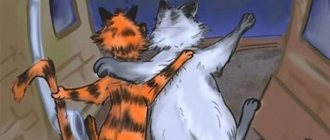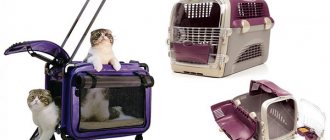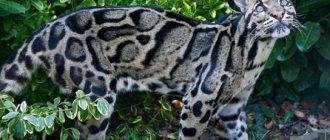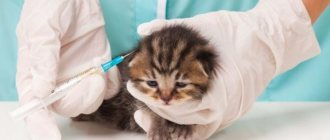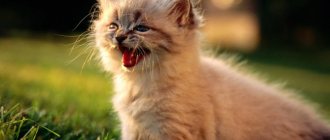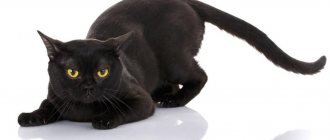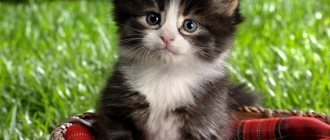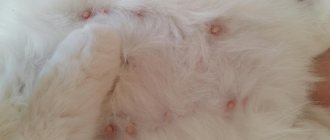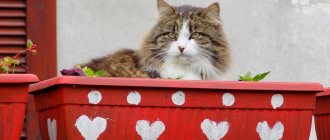Russia is a cat superpower
Almost a thousand comments in English, and every second one mentions Russia. Unexpected attention - from users of the Western image board, who are engaged in heated debates under, at first glance, an ordinary publication. They are discussing a map of Europe, where the Russian Federation stands out not only in size, but also in another important parameter.
It is calculated in cats. Or, to be precise, in the number of apartments and houses that have at least one cat. As it turned out, in Russia and Belarus this figure is higher than all others and is more than 50 percent. That is, it concerns every second person.
Next come Romania and Latvia. But Spain and Greece, for example, are among the laggards. There are only 10 percent domestic cats.
A variety of conclusions can be drawn from these interesting statistics. But Western users, understandably, first of all wonder about the reasons for such unobvious superiority. And while some people are announcing the move out of love for animals, others are openly perplexed - they say, how did it happen that Russians love cats more than anyone else in Europe.
During quarantine, this trend has only intensified. Indeed, the virus has brought cats and Russians together. But this is not the main reason for friendship.
“It’s all because they captured us!” – Russian-language commentary on the sensational publication. It is unknown where the statistical data came from. But experts urge not to doubt them.
That's really true. On the European map of love for cats, Russia and Belarus are the brightest spots. It’s as if they really are occupied territories. Experts have been recording a progressive explosive cat addiction in our country for several years now.
“Cats have become very popular in recent years. This is probably due to the fact that people lack communication with living nature. I would like there to be some flowers and animals at home. Statistics tell us that the number of people purchasing cats especially increased during the first epidemic of the COVID-19 coronavirus. This is March, April. Because people were sitting at home, they were bored. And they wanted some kind of communication,” says Elena Shevchenko, president of the International Felinological Association.
In general, Russia is one of the world leaders in the number of pets. Every month, residents of our country spend more than 36 billion rubles on their smaller brothers. That is, in six months an amount equal to the cost of the Crimean Bridge is spent on food and veterinarian services. In our country, about 70 percent of families keep at least one pet. This is an absolute record in Europe. In some places in Latin America you can find a higher percentage. Only there, as everywhere else on the planet, dogs prevail.
And only in Russia are cats listed. Here we have a world record. There are more than 30 million of them in the country (again, according to some estimates). That is, every third European cat is ours.
Most often they are started by young people aged 18 to 24 years. Psychologists believe that in the frantic pace of modern life, they simply really want to have someone nearby who loves and will always support. But it does not require constant attention.
“For a person, this can be a way of caring for some other creature, a way of showing parental feelings. When getting a cat, they pursue the same goals: to find a friend and to be useful. Plus the story with grooming: when we touch someone, comb them, give them a massage, this is a very strong calming anti-stress therapy,” explains psychologist and animal behavior consultant Yulia Mysheva.
With love for cats, everything is clear. But why are they not liked in some parts of Europe? In reality, each country needs to be considered separately. For example, in Germany there is a pet tax, and having a cat is simply expensive.
As for the Spaniards and Greeks, you shouldn’t think that they have hearts of stone either. The statistics included only domestic cats. And in warm southern Europe they don’t have to be domestic. Many live on the streets and are, as it were, common.
“There is such a practice. Even many pharmacies have bowls of food and water for homeless animals - cats, dogs. Plus we have a park where cats live. People can come there and chat with them, pet them,” says Victoria Drozhzhina, a representative of the “Spain in Russian” portal.
Russia not only imports, but also exports cats. Several popular breeds originate from our country - for example, the curly-haired Ural Rex and the fluffy Siberian cat. The same fluffy, but without a tail, the Kurilian Bobtail, the Don Sphynx and the St. Petersburg Sphynx with giant ears.
In general, now it’s official: Russia is a cat superpower. Looks like we have a new national symbol. Bear, move over.
Russians love cats more than anyone in the world
According to the study, Russia has the largest proportion of cat owners in the world.
Photo: Yulia PYKHALOVA
Russians, congratulations! We have finally caught up and surpassed America, as well as all other countries combined. We are in first place - forget rockets and ballets, we have long been ours - for the love of cats. And not to some ephemeral Internet ones - which I reposted on Facebook, liked, and then ran around the sites. And to the real ones - the mustachioed and striped ones, for whom I am responsible, because I tamed them. Briefly speaking! The sociological company Dalia Research conducted a global study and officially determined that Russia has the largest proportion of cat owners in the world. There are not enough words for joy, so let’s move on to the numbers: 59 percent of Russians keep at least one cat . And 18 percent of citizens have from two to ten cats . It turns out that less than half of our country is catless 41 percent! This phenomenon does not occur anywhere else in the world. A reasonable question arises - why?
Russians turned out to be the main cat lovers in the world.
Photo: Rushan KAYUMOV
“We can explain this phenomenon of great love among Russians for mustachioed tabbies,” comments felinologist-breeder Tatyana Sazonova, owner of the Saymur cattery of British cats. “We have had enough reasons to worry lately.” And the cat is an amazing creature that plays the role of anti-stress. Scientists have found that if a purring cat cuddles up to an excited person, that person quickly returns to normal. This is how people, apparently, struggle with their emotions. And at the same time - and with loneliness: first of all, those who lack a life partner get cats. But families, as I noticed, are also willing to buy cats. For educational purposes for children - if a child is given a kitten, he becomes more responsible and independent. And for grandparents - so that they switch their care and guardianship to a furry, purring child.
QUOTE OF THE MASTER
Near the house in the fall, an observant person can see something funny. Recently, a forester told me: a cat that had gone feral over the summer was chasing a young leaf-bunny hare. The hare was still much larger than the cat, and although the robber overtook him, he was unable to cope. Feral cats return home in the fall. The same forester from the cordon near the village of Ivanovskoye, Kursk region, said: in the fall at the cordon there is no way I can save you from these cats. In the summer they live in the forest - they prosper, but in the fall there is hunger and cold. And the cats gather at the cordon. They climb into the chimney, settle in the barn, in the attic. “They misbehave, and at night they scream and fight... But don’t kick them out. Let them live!”
V. PESKOV.
Now let’s decide who can even be called a purebred animal?
No matter how much we love all our Muroks and Barsiks, only those who have an identifying document - a pedigree can be called purebred. issued by a club uniting felinologists (specialists in keeping, breeding and selection of breeding animals). Each felinological organization includes several clubs. And a nursery that has pedigree individuals and is engaged in their breeding must join one or more such organizations.
As you can see, the organization of the system is quite serious, and it is necessary to understand the difference between clubs and associations of felinologists. The club (or a specific nursery) directly breeds purebred cats. He selects individuals based on appearance, color and pattern, and on characteristics of temperament and character. That is, it develops and maintains the breed standard. There are cases when a club develops new color variations or even a new breed, but it itself does not have the right to make a decision on approval. This is necessarily done by a larger organization, of which this club is a member.
Source

